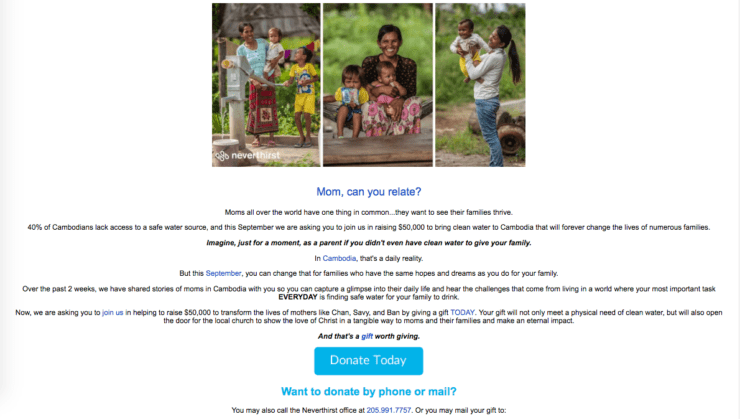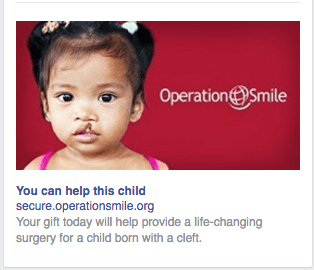After seeing thousands of campaigns here at CauseVox, we know that promoting your fundraiser the right way can help to ensure a successful campaign. This is especially the case as the year comes to an end and your fundraising efforts ramp up.
But instead of just promoting your campaigns with a simple one-size-fits-all approach, we believe that getting to know your audience and marketing specifically to them is essential.
Start preparing to promote your year-end fundraising campaigns by segmenting your audience based on factors like demographics, interests, and preferred methods of communication. From here, you can customize and personalize your communications, thus ensuring you’re talking with donors about what they want to hear, when and how they want to hear it.
After you understand your donors, it’s time to promote your year-end fundraising campaign.
Here’s how:
Email Marketing
With an average return on investment (ROI) of 360%, email marketing is an effective and affordable way to promote your year-end fundraising campaign.
The key is to target emails to your audience. Learn about your audience’s demographics and interests by researching website analytics and compiling donor data from your own research and questionnaires, and then sorting that data within your nonprofit CRM or donor management system.
When sending out targeted emails, customize the message based on what appeals to your donor. For example, if you know a segment of your donors responds positively to client stories or moving images, then feature these in your correspondence.
Make your year-end fundraising campaign emails stand out by following these best practices:
- Subject Line– The first thing your audience sees when they receive an email is the subject line, so make it count by:
- Keeping it short (ideally under 50 characters)
- Not overusing capital letters
- Posing a question (if appropriate)
- Personalizing with the donor’s name (if available)
- Content– Use emotion-evoking text and images to drive home the point of your campaign. Address the following within the email body:
- Who/what you’re helping
- Why the campaign is vital to make change in the world
- How your donor’s gift plays a role in that change (hint: the gift is essential!)
- Call to Action– Leave your reader with an action you’d like them to take, which in this case would be donating. Your call to action is what drives action, so it must:
- Be clear and direct
- Stand out on the page
- Cause your audience want to act immediately

When promoting your year-end fundraising campaign using email marketing, you must know your audience and then use that knowledge to craft a customized, compelling message.
Reference The Complete Guide To Email Marketing For Nonprofits for additional information about using email to promote your year-end fundraising campaign.
Social Media
Social media is more than just an avenue to share pictures of fancy dinners and babies. Nonprofits and charities that use social media to fundraise find that it’s a great way to reach an ever-expanding audience of current and prospective donors.
However, the first rule of fundraising via social media is that you need to understand how the platforms treat nonprofit posts. Currently, there’s a shift going on across a number of social media platforms like Facebook and Instagram that prioritizes posts by friends and family over those from nonprofits and businesses.
That doesn’t mean you can’t get your campaign in front of a large audience—you just have to know how to be seen.
Here are a few tips to help you promote your year-end fundraising campaign and secure donations through social media:
- Share It: Ask your audience to share your fundraising posts, photos, videos, and stories on their own pages/profiles. If you’re running a peer-to-peer fundraising campaign, then this is the perfect time and place for your supporters to share their personal fundraising pages.
- Keep It Personal: When creating content for a social media fundraising campaign, ensure you’re speaking directly to your audience in a personal, casual way.
- Make It Simple: Your social media followers don’t want to follow a trail of links to make a donation, so send donors directly to your donation webpage.For a more in-depth look at using social media to promote fundraising campaigns, here’s a CauseVox webinar on the subject: How To Set Your Nonprofit Up For Social Media Fundraising Success.
Paid Social Media
Your audience of potential year-end donors isn’t limited to current social media followers. In fact, it’s best to think of social media as a pool filled with people who may see value in your cause but just don’t know about it yet.
By using paid social media, you’re getting in front of people who may not otherwise see your posts and providing them with fuel to take action.
Almost all social media platforms are using promotional posts in one form or another and we believe that there’s at least one platform out there that you can use to elevate your fundraising campaign to the next level. Let’s take a look at two of our favorites: Facebook and Instagram.
Whether you work at a nonprofit with an operating budget of $20K or $2M, Facebook has a promotional feature that will help your campaign be seen.
To start analyzing stats on your current Facebook followers, check out Facebook’s Audience Optimization features. Then, decide between these paid options:
- Boost Posts: Your Facebook posts can be easily “boosted” to a larger audience using the boost post feature. This is a quick and easy way to get your posts in front of more donors.
- Promoted Posts: Promoted posts have more options (because they use Facebook’s ad manager) and targeting features than boosted posts. If you already know about your average donor (for example, it could be a female between 18-40 living on the east coast), you can promote your posts to this target audience for a set amount of time. You can also use promoted posts in a retargeting campaign aimed at engaging website visitors and/or email subscribers.

If your nonprofit has access or the ability to create and share emotional images about the clients you serve, then Instagram ads may work for you.
You can choose to promote to a targeted audience using simple pictures, videos, or the carousel option (swipeable with an additional call to action button included).
Because Instagram is owned by Facebook, you’ll use the same portal to create both Facebook and Instagram ads.
Direct Mail
No, direct mail isn’t dead (although, it feels like it sometimes). And surprisingly, nonprofits still get great results from sending out a traditional fundraising letter or postcard.
These 3 tips can help you use direct mail to promote your year-end fundraising campaign.
- Familiarity: Send requests to your current and lapsed donors, customizing content to each audience. For example, you can tell your lapsed donors about the number of lives changed over the last year since they’ve last given and express how you’ve missed them. With direct mail you’re bound to get a better ROI when you reach out to those already familiar with your cause.
- Personalization: Direct mail letters can easily be personalized to the recipient and signed (by a real person!), both of which will help increase your ROI.
- Use A/B Testing: Try out a couple different fundraising letters on sample audience to figure out what types of messages work better with your donors.
Additional Promotional Tools
Nowadays, nonprofits and charities aren’t limited to snail mail and online promotions. Consider using one these additional promotional tools to fuel your year-end fundraising campaign.
Local & Regional Media
Contact your local or regional newspaper, news, and radio stations to spread the word about your campaigns. If you’re running a #GivingTuesday campaign as either a one-day event or as part of your year-end annual campaign, local media may be more likely to pick up on the story because it’s now considered an international day of giving.
Partnerships
Chances are, you work closely with other for-profit and not-for-profit organizations that help the same clientele or work toward a similar cause. Leverage these relationships to help spread the word about your own year-end fundraising campaign.
Food pantries, for example, often partner with churches and schools to raise additional funds and distribute their aid across multiple channels.
Fundraising is hard, and at CauseVox we realize that you’re putting forth a lot of time and resources to get the job done and bring in those last dollars before the end of the year. And while this is the time of the year when donors are more eager to give, that doesn’t mean that money just flies in the window.
That’s why it’s so important to use all available avenues to promote your year-end fundraising campaigns. Begin with as much donor data as you can collect and then customize your communications based on that information.
Remember—it doesn’t matter if your donors prefer email versus social media versus hearing about your campaign through the local paper, as long as you reach them where they are and inspire action.
Editor's Picks
Ultimate Guide To Peer-to-Peer Fundraising
Customer Story: Spur Local Raises Over $1M With Their Give Local Campaign
Fundraising Strategies for Nonprofits: Craft the Best Approach for Your Organization
Create a Killer Fundraising Plan - Best Practices, Strategies, & Downloadable Template



